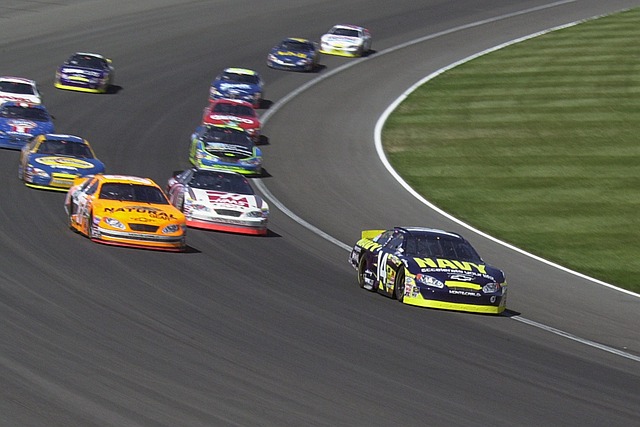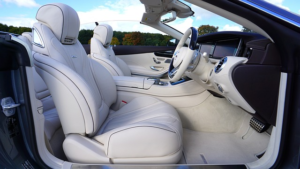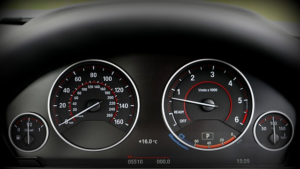Paul Rouse: Fast cars always prove to be a formula for success with the fans – Irish Examiner
As the Formula 1 motor racing season comes to an end, the scale and reach of this global sport is undeniable.
There is nothing quite like it. Yes, more people play and watch soccer, basketball and cricket. Even tennis and badminton have more spectators and players.
But Formula 1 is more or less the fastest growing major sport in the world, in terms of public interest. This …….

As the Formula 1 motor racing season comes to an end, the scale and reach of this global sport is undeniable.
There is nothing quite like it. Yes, more people play and watch soccer, basketball and cricket. Even tennis and badminton have more spectators and players.
But Formula 1 is more or less the fastest growing major sport in the world, in terms of public interest. This is true in respect of global television coverage and, in particular, on social and digital platforms.
More than that, the enormous sell-out crowds that attended races on every continent evidenced a sport on the rise again.
You cannot repeatedly fill venues than can hold more than 100,000 spectators unless there is a deep popular interest and a swell of momentum.
One of the most striking post-Covid sports stories is the number of Irish people who now travel abroad to Grand Prix across Europe, and even to America and the Middle East. The precise number is unclear, but anecdotal evidence suggests a dramatic increase.
There should be no surprise in this. Irish people have been prominent – even central – along the history of the sport.
The Irish affinity with Formula 1 racing was most recently manifest in the lives of Eddie Jordan, Eddie Irvine, Derek Daly and Rosemary Smith.
But it is an affinity that extends back more than 100 years, all the way to the years immediately after the invention of the motor car.
This began with the Gordon Bennett Cup Race, which was held on a 372.5 mile figure-of-eight course through Kildare, Carlow and Queen’s County in 1903. This race – which drew competitors from across Europe and America and was watched by up to one million spectators – was a pivotal moment in the establishment of the modern sport of motor racing around the world.
After the establishment of the Irish Free State, Ireland was promoted as a Grand Prix venue on the international circuit. This move was funded by the Irish public, leading Irish companies and ultimately by the new Irish state. The ambition to host a Grand Prix was made real in 1929 when the Irish International Grand Prix was staged in the Phoenix Park in Dublin. The Grand Prix circuit was 4.25 miles long and was used between 1929 and 1931, for the Grand Prix motor racing.
What happened once in Dublin, happens now in Saudi Arabia, Qatar and Abu Dhabi – as well as in Rio, Baku and Monaco. The axis of the sport has shifted hugely in recent decades.
This has been a deliberate business decision by those who own the sport.
Whenever you want to look at cutting-edge trends in the business of sport, a great place to start is Formula 1.
Take for example what is happening in the Gulf states. Since Liberty Media bought Formula One for an estimated $8bn deal in 2017, they have pursued a policy which centres on the Middle East for growth.
In this, it draws on attempts of states whose wealth is oil and gas-dependent to develop more diverse economies based on tourism, technology and entertainment. Sport is central to these attempts (as can be seen by the staging of the World Cup).
For Formula One, this has meant Gulf States developing race tracks, staging Grand Prix, buying teams, and spending a lot of money on sponsorship deals.
It has been fundamental to Formula One increasing its basic revenues by more than $300m in the first nine months of 2022.
The next step in the growth of Formula One is expected to be taken in Africa.
There are those who – like James Joyce by in 1903 who was disgusted by the Gordon Bennet race’s capitalist connotations and saw it as a decadent folly – despise motor racing as not really a sport at all.
They remains unimpressed by the glamour or the lure of technology.
And, of course, environmental protests inevitably question the place of the sport in the midst of a climate crisis that is now unfolding, Formula 1 pledges to reach net-zero by 2030 have assuaged few.
Similarly, the proposition that Formula 1 can essentially operate as a laboratory to test the most efficient, most environmentally friendly fuel and to spread that across society is met with a significant degree of scepticism.
Indeed, the sport’s multiple world champion Lewis Hamilton has spoken out to lament that not more is being done: “F1 is only implementing it (net-zero) in ten years’ time and I don’t fully understand why that doesn’t change sooner. These large corporations that have a lot of money and power behind them and can definitely make change happen quicker but it’s not their No 1 priority. Until there is a point where it is the number one priority for governments and for the world, then it’s going to continue to be a slow burner.”
Hamilton was speaking in the wake of a report that was commissioned by Formula One (it can be read here https://corp.formula1.com/wp-content/uploads/2019/11/Environmental-sustainability-Corp-website-vFINAL.pdf).
It was estimated that Formula One generates 256,000 tonnes of carbon dioxide per year. Most of this was not generated by the cars themselves (0.7 per cent), but by the movement of teams around the world (some 45 per cent). Other team travel during the years was also important (27.7 per cent), while factories, team facilities and event operations amounted to more than 26%.
But those amounts do not include the travel and accommodation of the millions of fans whose emission-generation is estimated at much more than another 1.9 million tonnes of tonnes of carbon dioxide.
Promising to plant trees and otherwise offset this carbon-production does not feel like anything close to enough.
Although it must be noted in passing that there are few sports that are currently serious about sustainability and developing practices that are genuinely carbon-neutral. The United Nations has addressed this matter and pointed out just how significant sport is in contributing to global warming: “The global sport sector contributes the same level of emissions as a medium-sized country. The carbon footprint from transportation to/from events, the construction and use of various sporting venues, and the supply chains for sport-related equipment all play an important role in affecting the world’s climate. For example, it has been estimated that the 2016 Rio Olympics released 3.6 million tons of carbon dioxide, while the 2018 Russia World Cup released 2.16 million tons.”
While its environmental record may damage with some the image of Formula One, it is hardly decisive.
The lesson of history is that since the invention of the motor car, huge swathes of people have been drawn to their apparently irresistible appeal. The thrill of speed is essentially the thrill of the modern.
And across more than 120 years now, the people who race cars and who watch others race those cars have found ways to pursue their passion.






